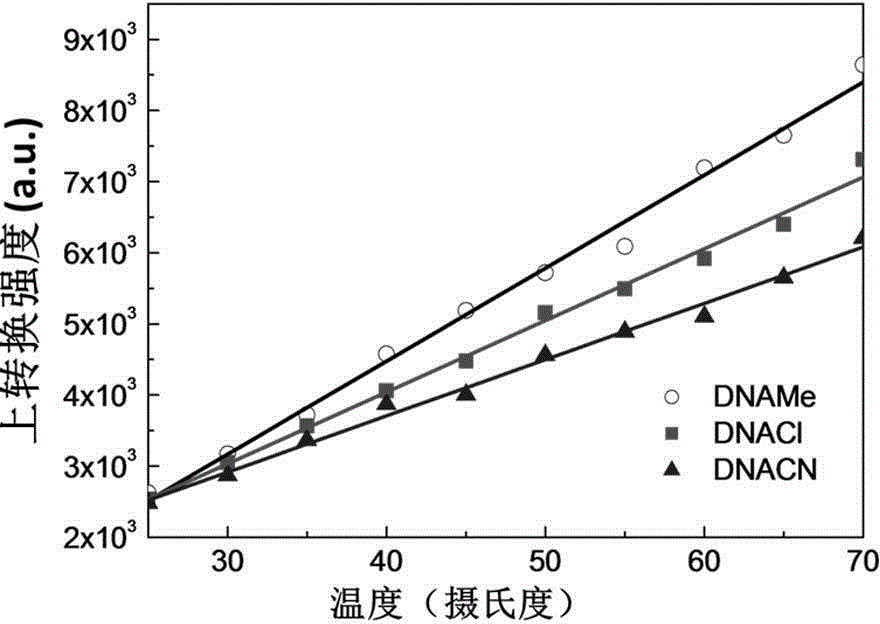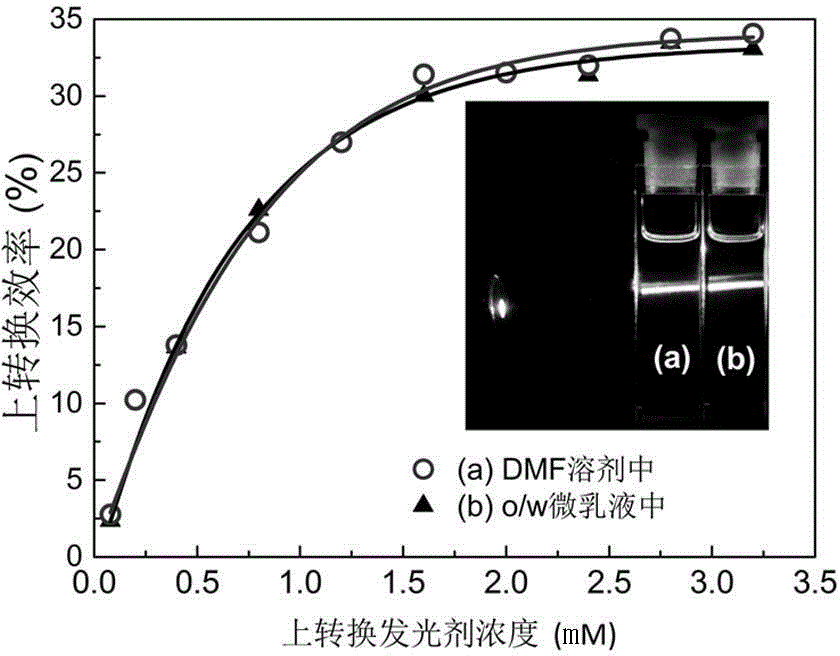Weak light frequency upconversion o/w type microemulsion system
A microemulsion and frequency technology, applied in the field of nonlinear optical materials, can solve the problems that are not conducive to the practical application of weak light up-conversion process, reduce the up-conversion efficiency, quenching, etc., achieve stable up-conversion efficiency and increase frequency up-conversion intensity , high stability effect
- Summary
- Abstract
- Description
- Claims
- Application Information
AI Technical Summary
Problems solved by technology
Method used
Image
Examples
Embodiment 1
[0034] Example 1 Preparation of weak light frequency up-conversion o / w microemulsion system
[0035] In this example:
[0036] The molecular structure of the metalloporphyrin complex used for photosensitizer is as follows:
[0037]
[0038] The structural formula of the luminescent agent is one of the following structural formulas:
[0039]
[0040] The surfactant is: fatty acid glyceride or Tween homologue;
[0041]Benzene solvents are: toluene or xylene;
[0042] The mol ratio of water and benzene solvent is (1~10): 1;
[0043] The mol ratio of water and surfactant is (1~10): 1;
[0044] The molar ratio of the luminescent agent to the photosensitizer is (1-300):1.
[0045] Two-component microemulsion configuration: put a certain ratio of surfactant and deionized water mixed solution in a nitrogen atmosphere and stir to make it completely deoxidized, then add a benzene solvent solution containing a photosensitizer and a luminescent agent, After stirring, a transpa...
Embodiment 2
[0054] Example 2 Preparation of DNAMe / PdMeTPP systems with different luminescent agent concentrations
[0055] Stir the mixed solution of Tween-20 (10mL) and deionized water (18mL) in an atmosphere of nitrogen to make it completely deoxygenated, then add 2mL containing photosensitizer DNAMe (0.12mM) and luminescent agent PdMeTPP (1.2mM~ 48mM) toluene solution, after stirring, DNAMe / PdMeTPP microemulsion systems with different luminescent agent concentrations were obtained.
Embodiment 3
[0061] Example 3 Application of weak light frequency up-conversion o / w microemulsion system in ditungsten trioxide catalytic hydrogen production
[0062] Deposit tungsten trioxide on the surface of ITO glass as photoanode, platinum rod electrode as cathode, and 1.0M sulfuric acid aqueous solution as electrolyte. Photoanode WO 3 The effective area is 1cm 2 . Under the excitation of ultraviolet light, the tungsten trioxide photoanode undergoes oxidation reaction to generate photocurrent, and at the same time, hydrogen gas is generated on the cathode.
[0063] The up-conversion two-component solution (1cm optical path) placed near the working electrode is photoactivated, and the laser (diode-pumped solid-state type, emission wavelength: 532nm, 60mW / cm 2 ) is used as the excitation light source for the upconversion two-component, and produces photoelectrochemical upconversion, emits blue light, and drives tungsten trioxide to undergo electronic transitions to obtain photocurren...
PUM
 Login to View More
Login to View More Abstract
Description
Claims
Application Information
 Login to View More
Login to View More - R&D
- Intellectual Property
- Life Sciences
- Materials
- Tech Scout
- Unparalleled Data Quality
- Higher Quality Content
- 60% Fewer Hallucinations
Browse by: Latest US Patents, China's latest patents, Technical Efficacy Thesaurus, Application Domain, Technology Topic, Popular Technical Reports.
© 2025 PatSnap. All rights reserved.Legal|Privacy policy|Modern Slavery Act Transparency Statement|Sitemap|About US| Contact US: help@patsnap.com



